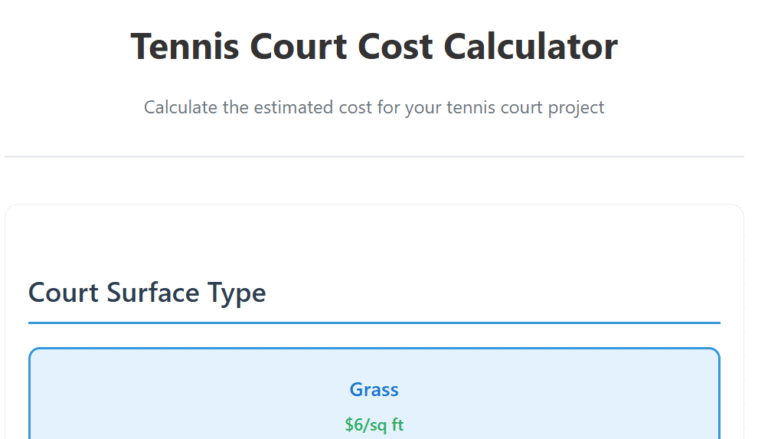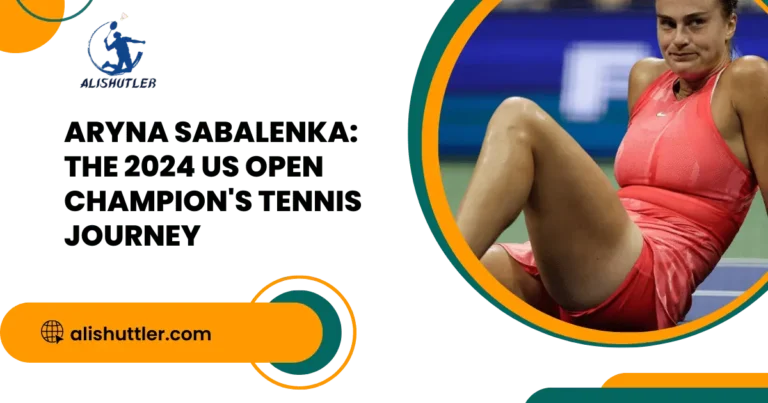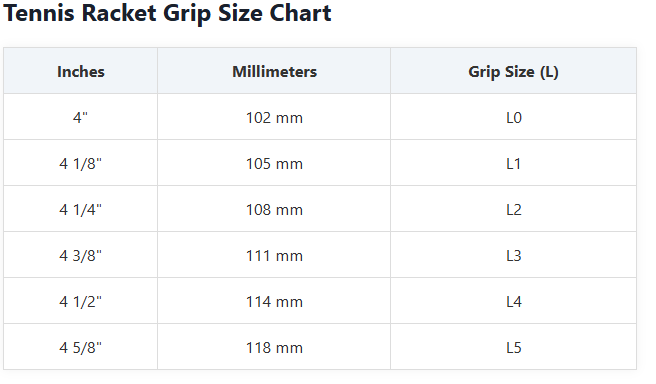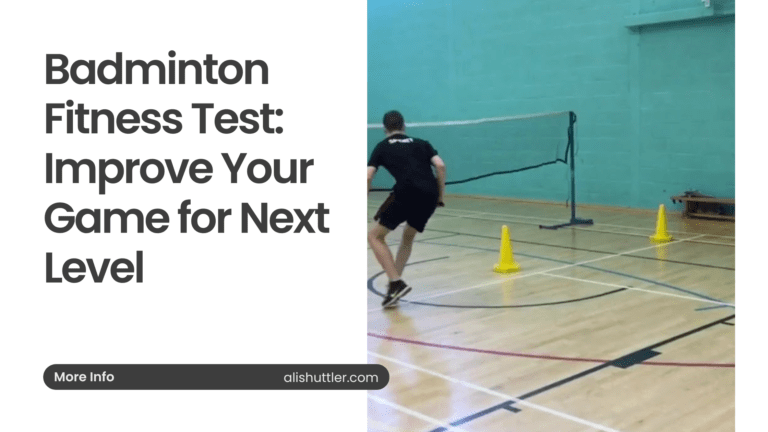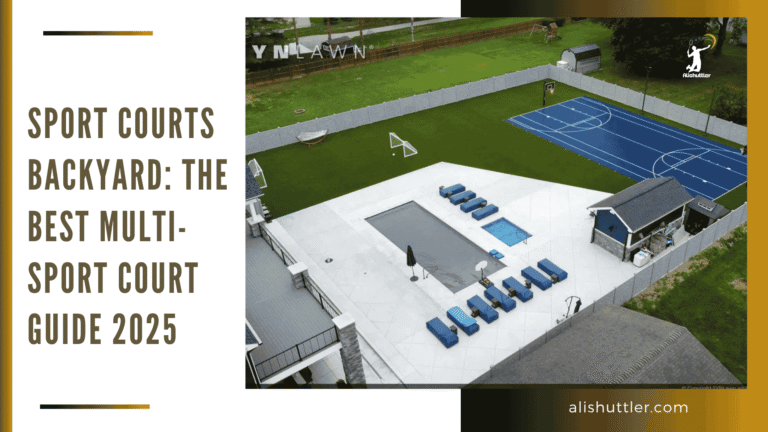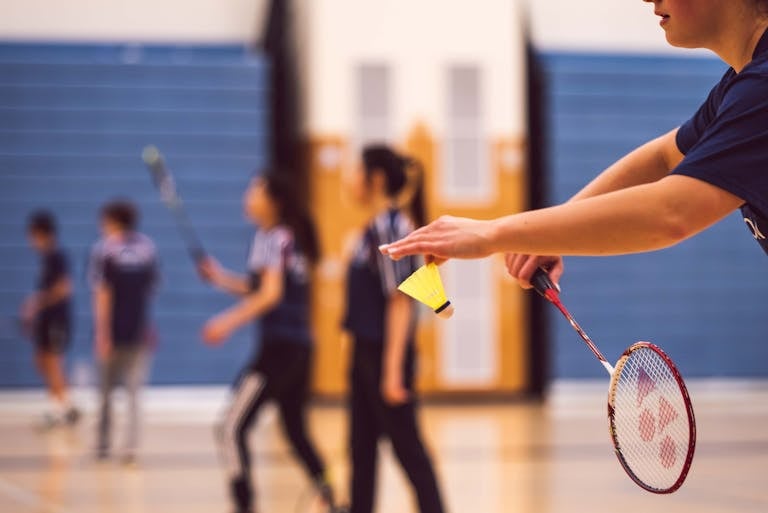Tennis court surfacing is the construction and covering of the playing area with particular layers, impacting game play. Surface type, weather and use all play a big part in the material choice.
The traditional choices are hard, clay and grass, which all provide a different bounce and pace. Selecting the appropriate surface assists with player safety and court longevity.
Below, what to know before constructing or repairing a tennis court.
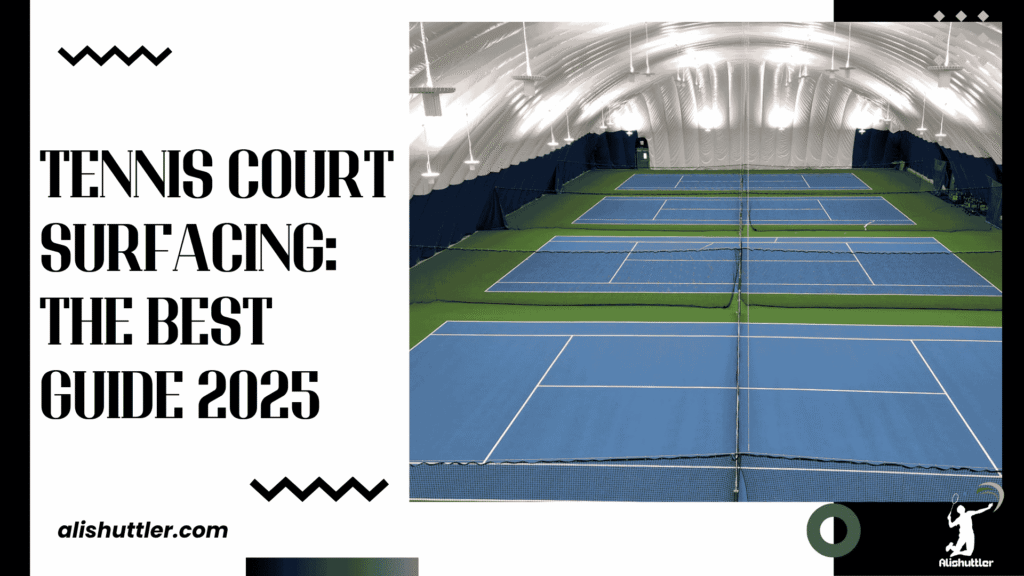
Surface Types
Tennis courts come in various types, defined by their construction and material, including vibrant tennis court paint and advanced tennis court surfaces. The chosen surface significantly influences play speed, ball bounce, and maintenance, aiding players, clubs, and facility managers in selecting what best suits their needs.
- Hard courts: Built from concrete or asphalt, often topped with acrylic.
- Clay courts: Use crushed shale, stone, or brick, common in Europe and Latin America.
- Grass courts: Made of real grass on hard-packed soil, fast and rare.
- Carpet courts: Portable, textile surfaces found in some indoor facilities.
- Artificial clay: Mimics real clay but uses synthetic materials for less upkeep.
- Artificial grass: Uses synthetic blades and infill for a grass-like feel.
- Modular tile: Interlocking tiles, often for multi-use or temporary courts.
- Fast dry courts: Hard courts designed to drain water quickly after rain.
- Cushion courts: Hard courts with extra layers to reduce impact on joints.
- Rebound Ace: A cushioned hard court with a rubber base, popular in some regions.
- Hybrid surfaces: Mixes natural and synthetic elements for specific play needs.
1. Hard Courts
Hard courts have an asphalt or concrete base, with acrylic layers on top. The flat, hard surface provides a predictable bounce and accommodates numerous styles of play. These courts are common in parks, schools and clubs due to their durability and relatively low cost.
For example, most pro tournaments, such as the US Open, favor hard courts because they’re good for fast games and hold up against frequent play. The sand they mix into the acrylic changes the speed — the more sand, the slower the ball; the less sand, the faster the play.
Maintenance is easy. So cleaning, refreshing with paint when required and repairing cracks is sufficient. Hard courts drain well, too, so play can resume shortly after a rainfall.
2. Clay Courts
Clay courts take crushed brick or stone and top them, providing a soft, slow surface. Red clay for Europe, green for North America. Both are slow the ball and produce a higher bounce.
Maintaining them smooth need a little work. Watering and rolling and sweeping are every day. The surface can dry out or shift, so you need to check it frequently.
Players have to modify their game. The ball moves slower and bounces higher, favoring baseline rallies and good footwork.
3. Grass Courts
Grass courts are made of a thin layer of natural grass that’s grown on top of a very hard-packed soil. This makes for a quick court with low, unexpected bounces. Wimbledon is the only grass major on the pro circuit.
Grass courters serve and volley a lot, playing to the quick surface. Maintaining the lawn is harsh—mowing, watering, reseeding, all endless chores. Wet weather can make grass courts slippery and unplayable.
4. Artificial Courts
Artificial clay and grass courts provide a low-maintenance means by which to emulate these natural surfaces. They utilize synthetic fibers or carpet on a level base.
These courts offer consistent playing conditions in the majority of weather and have a longer lifespan than natural courts. A lot of clubs and city centers use to slash overhead and downtime.
They’re becoming more popular because they require less maintenance but can still provide that homey look.
Resurfacing Process
Tennis court resurfacing is a regular but intricate procedure that maintains playing surfaces safe and consistent. These steps fix surface damage, restore court play and increase the lifespan of your facility. Most courts need to be resurfaced every 4 to 8 years, varying by local climate and usage.
The job typically requires 3 to 7 days, depending on weather and court size. Below are the main steps in the process:
- Check the court for surface wear, cracks and drainage.
- Scrub the court free of all dirt and surface grime.
- Repair cracks and level out imperfections with patching materials.
- Texture coat (such as Acrylic Resurfacer) for uniform base.
- Apply two-plus color coats of acrylic for coverage and durability.
- Let the surface cure fully before reopening for play.
Inspection
Full inspection begins with a close observation of the entire court. Any visible cracks, worn spots or faded lines are inspected. Even minor chips or peeling can quickly escalate into larger issues if left untreated.
Surface defects are identified. Drainage is verified – particularly post-rain. Bad water drainage pools water causing even more damage. For courts located in wet climates or with previous flooding, additional care is required here.
Inspectors record each problem. They leverage this record to schedule repairs, establish timelines and determine how many coats may be required. This preparation ensures the resurfacing process serves the court’s real need, not just the usual steps.
Preparation
All loose debris, like leaves and dirt, is swept away first. Pressure washing is often next to eliminate that stubborn staining and fine dust. This step is crucial because residual grit can prevent new coatings from adhering.
Cracks are filled with tennis court patching compounds. These patching mixes smooth in cracks and make the surface level in preparation for subsequent layers. Little fixes now prevent disasters that would shorten the new surface’s life.
We check and clear out all of your drainage systems. Blocked drains get cleared prior to resurfacing. The driveway is resurfaced and crowed, so that when it rains — water runs off and doesn’t collect in puddles.
By leveling minor imperfections today, it allows the covering to go on uniform.
Application
After prep, crews place their first coat—Acrylic Resurfacer. This filler/texture coat helps marry the old surface to the new. It conceals repaired cracks and shims out low spots or puddles.
Next, two to three coats of acrylic color surfacer get applied. They are applied with large, expert squeegees that distribute it uniformly. Additional coats for new asphalt or courts with a lot of repair. Each coat layers its playing surface, strengthening and leveling it.
Drying times between coats vary with weather and manufacturer guidelines. Hot, dry days assist in accelerating the process while damp humid air will slow things down. Observing these timing guidelines is crucial for preventing bubbles and maintaining a smooth surface.
Curing
Curing allows the new surface to set hard and last longer. Courts require a day or two before they are ready for play.
Technicians verify moisture and defects at this stage. They’d maybe rope it off and put up signs to keep players off. Even light use will stain if the cure is hurried.
Last checks to ensure the surface is hard and flat. They inform users when play is secure. This last step is what separates the court that lasts from the one that wears out fast.
Cost Analysis
Tennis court surfacing costs vary based on key factors like the size, surface type, damage level, and material quality. The complete cost equation includes one-time and recurring costs, as well as the influence of local climate and court utilization.
Below are the main initial costs you can expect when resurfacing a tennis court:
- Materials (resurfacer, coatings, line paint)
- Labor (professional vs DIY)
- Equipment rental or purchase
- Repairs to cracks, low spots, or drainage
- Pre-resurfacing inspections
- Court cleaning and prep
- Waste disposal and removal
Initial Costs
Costs of materials differ by type and thickness of tennis court surface coatings. Acrylic hard court coatings are the most prevalent and range from $8,000 to $16,000 for a full-size court, with cushioned acrylic coatings running from $10,000 up to $20,000. Clay court materials are pricier, hovering between $12,000 and $24,000, while synthetic grass or turf can run as high as $30,000. Each surface variant has different needs and costs, and premium quality tennis court surfacing materials typically drive the price up.
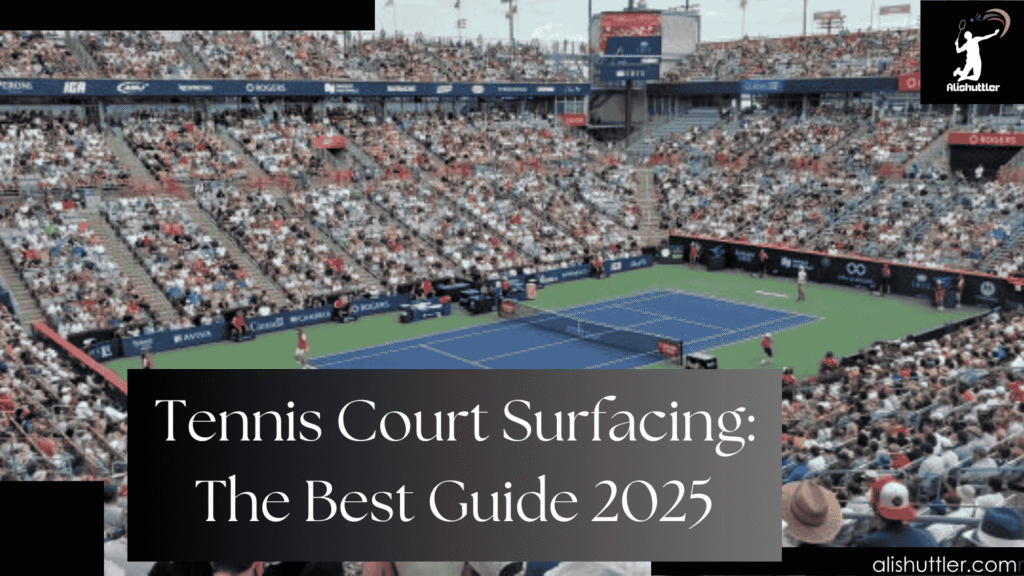
Labor costs are very broadly spread. Hiring experienced tennis court surfacing professionals to resurface can run anywhere from $4,000 to upwards of $20,000. DIY resurfacing, if you’ve got the talent, can reduce costs to $2,000–$5,000, but carries dangers of slap-dash application and limited longevity. Equipment rental or purchase for DIY jobs compounds the cost, but for a single, one-time use, rental is generally more economical.
Repairs and inspections before resurfacing tend to get overlooked but can be huge cost drivers. Repairing cracks, holes and drainage problems could tack on $1,000 to $4,000. Inspection fees and prepping the surface – cleaning, levelling, etc. – go into a long lasting finish but aren’t always included in regular estimates. Court removal, if necessary, can add another $10,000 to $15,000.
Court size directly affects all costs. Standard courts are roughly 670 square meters, and resurfacing costs scale with surface area. They average $43–$161 per square meter, so bigger courts and custom shapes will drive up the price for tennis court construction.
Long-Term Costs
Regular upkeep is needed to maintain the court in playable shape. That means cleaning, line repainting, crack patching, and sometimes surface layers. Yearly upkeep can vary from $500 to $2,000, depending on surface and usage.
Resurfacing is required every 5–8 years for hard courts and every 1–2 years for clay. Level of use and surface type influence this cycle. High-use facilities will need to be worked more often, resulting in higher aggregate costs.
Repair costs will enter the picture for things like drainage problems, surface damage and equipment wear. These can differ drastically; however, light fixes usually begin at $200 and go as much as $1,000 per concern.
Climate contributes significantly to long-term expenditures. Wet, cold, or humid conditions can quicken surface wear, heighten maintenance requirements and even reduce court longevity. Facilities in extreme climates might have to allocate more for repairs and resurfacing.
Value Factors
Superior materials, such as tennis court surface coatings, are more durable and provide better play; however, they tend to be more expensive initially. The upfront cost can lead to fewer repairs and resurfacing, making them more cost-efficient in the long term. For instance, padded acrylic and synthetic turf courts tend to be pricier, but they wear better with frequent usage.
Seasonal check-ups are the secret to a durable court. Simple tasks, such as keeping the court clean and repairing cracks as soon as they appear, can extend the lifespan of acrylic tennis court surfaces by a few years. This proactive approach helps keep costs predictable and reduces the risk of large repairs.
If you’re a homeowner or a facility, resurfacing a court may provide you with some additional property value. Nicely-maintained courts are a major selling point and attract buyers or renters who appreciate sports and recreation. The ROI is greater when maintenance is frequent and professional resurfacing performed as needed.
A well-cared-for court brings in more players and events. Clubs or public facilities benefit from increased usage rates that can justify the initial investment in quality tennis court construction. This can lead to higher membership, event, and tournament revenues.
Cost Calculator
A simple way to estimate resurfacing costs is:
- Measure the court size (in square meters)
- Select the surface type (hard, clay, synthetic grass or cushioned acrylic).
- Multiply the area by the typical cost per square meter:
- Hard court: $43–$86 per m².
- Cushioned acrylic: $53–$107 per m².
- Clay: $64–$129 per m².
- Synthetic grass/turf: $64–$161 per m²
- Add estimated costs for repairs, drainage, and inspections
- If pro service, include labor fees. For DIY, include equipment rental.
Key Considerations
Choosing the appropriate tennis court surfaces requires thoughtful consideration. Important considerations in helping direct surface selection include local climate, player requirements, type of facility, budget, and the quality tennis court surfacing products available.
- Climate and weather patterns
- Player skill level and style
- Facility use: residential, commercial, or public
- Budget for installation and upkeep
- Court orientation and spacing
- Drainage and foundation quality
- Accessibility and lighting rules
Climate Impact
Temperature and humidity affect court surfaces greatly. Intense heat can make hard courts crack or become too hot to play on, and moisture can make clay slippery and soft.
Clay courts require extra maintenance in wet locations, whereas synthetic grass tends to perform better in humid or rainy environments. Things must correspond to local climate. For example, acrylic hard courts perform best where rain is infrequent.
In wetter climates, adequate drainage is critical, so water does not collect or erode the foundation. Seasonal changes—like freeze-thaw cycles—can take a toll on shingle layers, so maintenance and repair is a must.
Climate also determines the lifespan of each surface. Clay degrades faster and requires resurfacing every 2-3 years, whereas artificial turf can endure for up to twenty years with consistent maintenance.
A good drainage system and a firm base guard the court’s lifespan, particularly in areas with storms or heavy rain.
Player Profile
Various kinds of play require various surfaces. Speedy, attacking players may love the quick bounces of hard courts, while baseline players may salivate over clay’s slow pace and higher bounce.
Recreational players and pros often have different requirements. Pros might seek out surfaces that replicate tour play, while the weekend warriors may want softer, injury-friendly options. Comfort counts—soft surfaces such as clay reduce the risk of joint strain and injury, a major concern for seniors or avid players.
Surface qualities may enhance or restrict performance. Some provide traction, while others facilitate sliding. A player-surface good match can keep games safer and more fun.
Facility Type
Neighborhood courts often have smaller budgets and less playing, so owners might opt for surfaces requiring less maintenance, such as artificial turf or cushioned acrylic.
Commercial sites, like clubs or schools, frequently select hard courts for their durability and capacity to absorb more play hours. Public courts get a lot of use, so surfaces need to hold up to wear.
Maintenance requirements and expenses increase as well with additional users, particularly with hard courts that require periodic resurfacing every couple of years. In these venues, court spacing and sideline buffers (12-15 feet) are important for safety and crowd circulation.
A facility manager’s decisions define the court’s longevity and safety. Public courts require wheelchair-accessible routes and seating, but all facilities are to adhere to lighting and net regulations.
Good drainage, foundation and layout planning helps satisfy local requirements and keeps the court safe for all.
Surface Innovations
Tennis court surfacing has evolved significantly with advancements in science and technology, incorporating durable tennis court surfaces and unique acrylic color formulations to enhance playability while protecting the environment.
Material Science
Man-made materials have transformed court surfaces in major ways. Acrylic and polyurethane have become standard for their durability and play characteristics. Acrylic resin provides excellent grip, performs in lots of climates and won’t fade fast because it’s color-fast pigments.
These pigments assist courts with maintaining their look, aka less work to stay them! The polyurethane courts utilize a base layer which is constructed from recycled rubber. This configuration provides additional padding and lengthens the life of the court.
In the past polyurethane had issues such as chipping and yellowing but fresh formulations have addressed many of these. Surfaces are now often up to rigorous ITF Category 4 standards for top play. Research has given us surfaces that combat cracks and puddling.
Drainage layers and new mixes allow courts to dry quickly after rain. Owners can merely resurface acrylic layers, rather than starting over, saving them both time and money.
| Material | Key Features | Main Benefits | Example Use |
|---|---|---|---|
| Acrylic Resin | UV resistant, color-fast pigments | Less fading, lasts longer | Outdoor public courts |
| Polyurethane | Cushioned, recycled rubber base | Soft on joints, durable | High-use club courts |
| Non-slip Acrylic | Textured for grip | Safer play, fewer slips | All-weather surfaces |
Player Safety
Court cushioning is key for safety, particularly on hard courts. Thick rubber mats or soft underlayers cut down stress on legs and joints. This aids individuals in playing for a longer period of time and reduces the chances of injury.
Non-slip tech in acrylic keeps shoes steady, even when wet. This is key for sudden stops and starts. Texture counts too—a touch of coarseness prevents slips but still allows the ball to bounce true.
Surface grip and stable footing provide players with increased control. Less falls and less injuries translate into safer games and less down time.
Eco-Friendly Options
Modern courts typically have either a recycled rubber or an eco-safe acrylic base. These minimize waste and use less virgin materials. Recycled content helps reduce landfill waste, and innovative processes reduce chemical impact on local soil and water.
Green building measures, such as mindful site preparation and intelligent water utilization, contribute to minimizing damage. A lot of sports teams are looking to build courts that consume less energy and have a longer lifespan.
So many clubs and city parks are now seeking green certifications for new courts. This trend is only going to continue.
The Player’s Perspective
Tennis court surfacing significantly impacts player experience, performance, and safety. Each surface—clay, grass, or hard—introduces unique elements that affect how players engage with the game. Player feedback has been crucial in selecting and maintaining quality tennis court surfacing, ensuring a fair and enjoyable experience for all levels of athletes.
Injury Prevention
Selecting the right tennis court surface is essential for reducing the risk of typical tennis injuries. Well-cushioned, non-slip surfaces, such as advanced tennis court surfaces, keep players from slipping and falling, helping to prevent stress injuries. This is particularly true on hard courts, where proper tennis court construction with sufficient padding can alleviate excess stress on joints.
Cushioning and shock absorption are important for player protection. A padded layer underlaying hard courts can lessen the impact on knees and ankles. On clay, sliding reduces forceful stops, relaxing joints. Grass courts, while quick, have a soft under-layer that can cushion falls but might require more maintenance to prevent slick areas.
Timely repairs are crucial to safety. Uneven patches or cracks can lead to sprained ankles or more severe injuries. Routine inspections and repairs maintain the safety of tennis surfaces for all players, ensuring continued enjoyment and performance on the court.
Game Style
Court surfaces benefit specific game styles. Clay courts promote baseline play and reward players who construct points. The higher friction and predictable bounce on clay slow the game to something more manageable, which gives players more time to react and plan shots. It also means learning how to slide and position well.
Surface speed completely changes gameplay. Grass courts, having low friction, accelerate the ball and generate low, random bounces. This benefits serve-and-volleyers who depend on short points and reactions. Hard courts, often constructed with durable tennis court surfaces, exist somewhere in the middle, with speed and bounce to favor all types of styles of play.
Players adjust their technique to every surface. On clay, sliding is a necessity for both movement and shot preparation. On grass, it’s all about quick feet and sharp cuts. Understanding each surface’s impact on the ball allows players to adapt their strategies to maximize match success.
Training Impact
Your court surface preference influences your practice habits and skill development. Practicing on uniform surfaces allows players to build muscle memory and trust their feet. Hard courts, with their even bounce, help hone strokes and timing, while clay courts force you to build endurance and patience.
Various surfaces force players to be more versatile. Clay courts require brains, fast grass courts require reflexes. Training on a variety of courts develops a more general skill base and prepares players to manage varying match conditions.
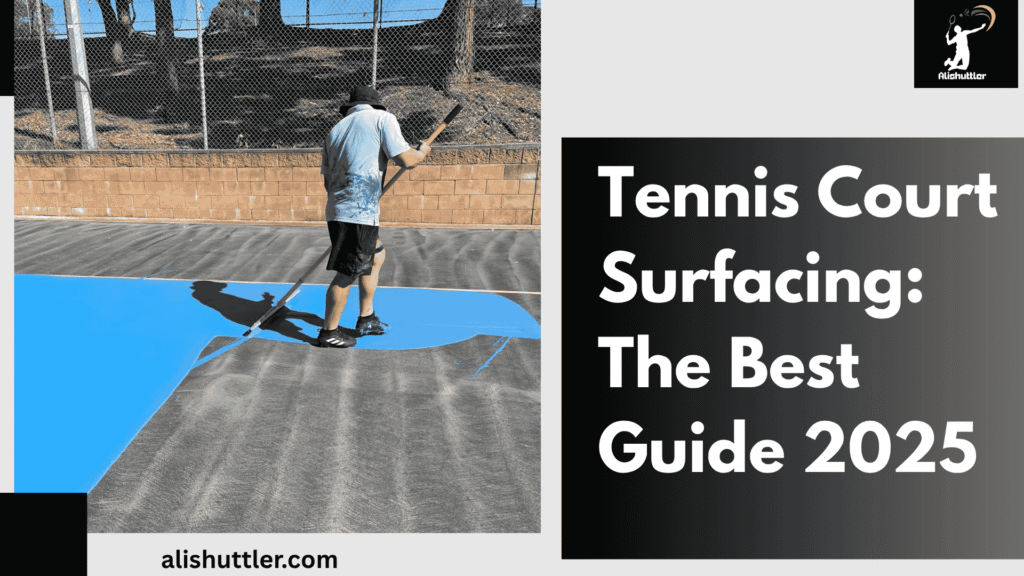
In the long run, practice on different courts improves your game. Players are more versatile, less injury-prone, and enhanced at any level of competition.
Player Comfort and Safety
Player comfort on tennis courts depends on the quality of tennis court surfaces, while safety comes from regular cleaning.
Final Thoughts
Tennis court surfacing influences how the game is played and enjoyed. Each surface has its own feel and maintenance requirements. New surface concepts arrive every couple of years. Players feel the tiny variations in bounce, speed and grip. Easy to overlook items such as repair work or surface selection can extend a court’s life by numerous years.
To design a new court or renovate an existing surface, consider the expenses and select what suits best for regional climate and style of play. New surfaces make tennis more enjoyable and safe for all of you! For additional tips on selecting the perfect court or maintaining your own, browse guides from reputable sources or consult a local sports professional.
Frequently Asked Questions
What are the most common tennis court surface types?
The most economical tennis court surfacing options include hard, clay, grass, and artificial turf, each offering unique playing characteristics and maintenance requirements for tennis players.
How often should a tennis court be resurfaced?
A tennis court will generally need resurfacing every 4-8 years, depending on usage, weather, and the quality tennis court surfacing products used.
What steps are involved in the resurfacing process?
Our resurfacing process for tennis courts involves cleaning, crack repair, leveling, applying tennis court paint, and line repainting.
How much does tennis court resurfacing cost?
Resurfacing costs for tennis courts depend on surface type and size but typically range between €3,000 and €10,000, influenced by tennis court paint and local labor rates.
What factors should I consider before resurfacing a court?
Consider surface type, climate, player requirements, maintenance, and budget when selecting tennis court surfacing systems; consulting a professional ensures you choose the best option for your court.
Are there new innovations in tennis court surfaces?
Yes, innovations like colored tennis court surfaces and eco-friendly materials enhance playability, longevity, and sustainability.
How does surface type affect player performance?
The choice of colored tennis court surfaces significantly influences ball speed, bounce, and player movement, enhancing enjoyment and minimizing injuries.
